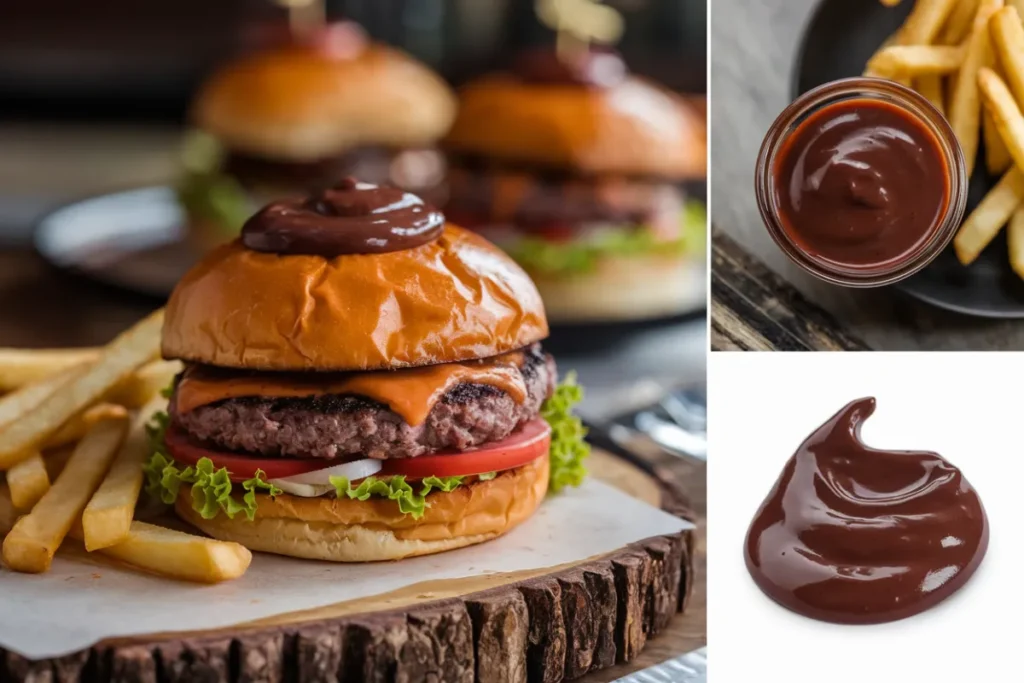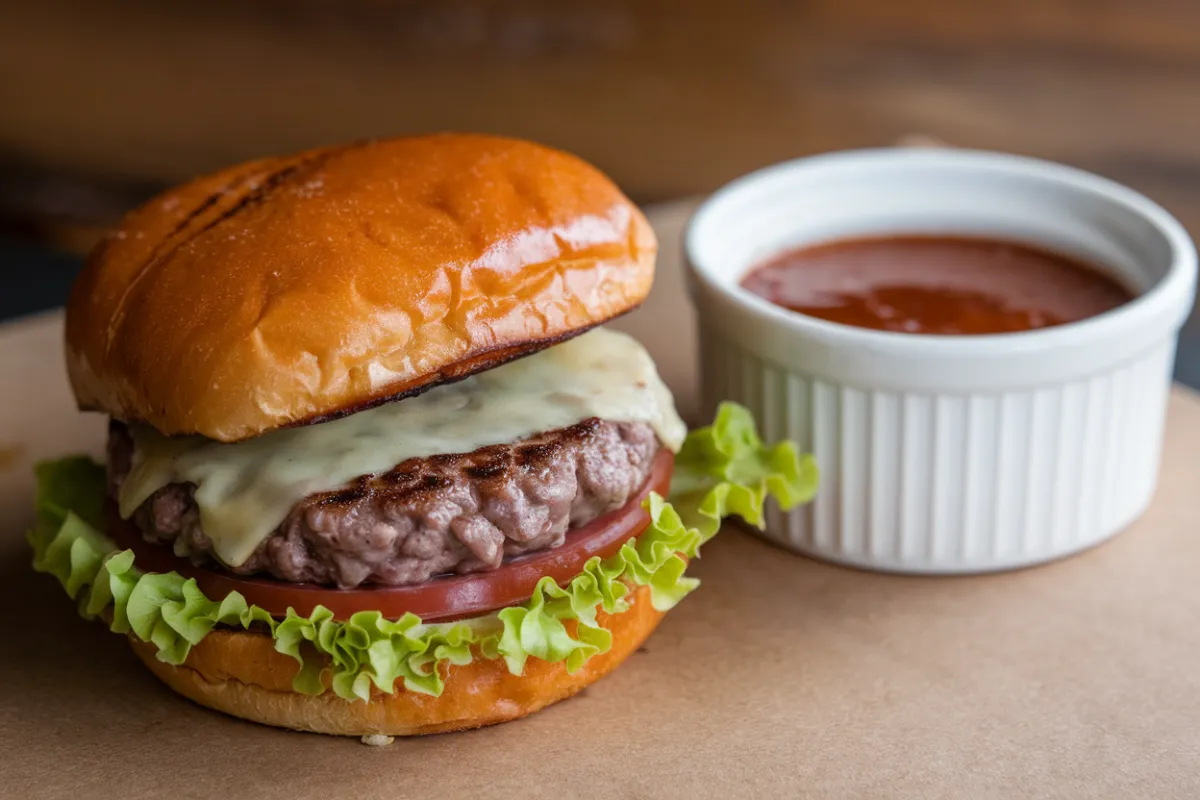Introduction
When it comes to elevating the flavor of a delicious burger or adding a tangy twist to a salad, two sauces often come to mind: burger sauce and Thousand Island dressing. These popular condiments are known for their creamy texture and versatile uses, but a question persists among many food enthusiasts — are they actually the same? In this article, we’ll delve deep into the origins, ingredients, and unique characteristics of each sauce to determine if burger sauce is merely another name for Thousand Island dressing or if there are essential differences that set them apart.
History of Thousand Island Dressing
Thousand Island dressing boasts a rich history that dates back to the early 1900s. The dressing originated in the Thousand Islands region along the U.S.-Canadian border. According to a popular story, a fishing guide’s wife, Sophia LaLonde, created the sauce using ingredients she had on hand to serve with a salad. Her recipe eventually reached high-end restaurants, thanks to actress May Irwin, who loved the dressing and shared it with her chef friends. This unique combination of flavors quickly gained popularity and soon became a staple in American cuisine.
Traditionally, Thousand Island dressing consists of a base of mayonnaise or yogurt mixed with ketchup or chili sauce. It also includes finely chopped ingredients like pickles, onions, and hard-boiled eggs, giving it a distinct texture and flavor. Over time, its versatility in various dishes — from salads to sandwiches — has made it a favorite for many. Learn more about the Thousand_Island_dressing to understand how it became a household name in the United States.
History of Burger Sauce
On the other hand, burger sauce emerged during the mid-20th century, alongside the fast-food revolution in the United States. As burgers gained immense popularity, fast-food chains started experimenting with their unique sauces to create a signature flavor that would stand out. These sauces aimed to provide a unique taste experience, encouraging customers to associate a specific flavor with a particular brand. While many of these sauces have similarities to Thousand Island dressing, they have distinctive variations that cater to diverse taste preferences.
Unlike Thousand Island dressing, which has a relatively consistent recipe, burger sauce varies widely among brands and restaurants. For instance, the famous Big Mac sauce, often compared to Thousand Island, includes a different blend of spices and lacks the chunky texture typical of the dressing. Fast food chains usually make their sauces with a mix of mayonnaise, mustard, ketchup, vinegar, and various spices. Each brand strives to create a unique taste profile that sets it apart from its competitors. For more insights into the different approaches to fast-food sauces, explore this guide on fast food sauces.
Ingredients and Composition: A Comparative Analysis
The key difference between burger sauce and Thousand Island dressing lies in their ingredients and composition. While both share a creamy base, often made from mayonnaise, and include ketchup or a similar tomato-based product, their additional ingredients vary.
- Common Ingredients in Thousand Island Dressing:
- Mayonnaise or yogurt
- Ketchup or chili sauce
- Sweet pickle relish or chopped pickles
- Chopped onions
- Hard-boiled eggs
- Paprika or other spices
- Common Ingredients in Burger Sauce:
- Mayonnaise
- Mustard
- Ketchup
- Pickle brine or relish
- Onion or garlic powder
- Sugar or sweetener
- Paprika, cayenne, or other spices
Both sauces deliver a blend of tangy, creamy, and sweet flavors. However, Thousand Island dressing is known for its chunky texture, thanks to the inclusion of pickles and onions. In contrast, burger sauces are generally smoother, often spicier, and have a more pronounced vinegar or mustard flavor.
Usage in Fast Food Chains

Both sauces enjoy popularity in the fast-food industry, but they serve different purposes. Thousand Island dressing frequently appears in chain restaurants as a salad dressing or sandwich topping. It’s especially popular in Reuben sandwiches, where its sweet and tangy flavor complements the salty corned beef and tangy sauerkraut.
Burger sauce, however, was created specifically to enhance the flavor of grilled meats, especially burgers. It is commonly used as a secret ingredient in popular fast-food burgers. Each fast-food chain develops its unique sauce blend, which may resemble Thousand Island dressing but is crafted to fit the brand’s flavor profile. This difference highlights why some people argue that burger sauce is a variant of Thousand Island dressing, while others maintain that they are distinct products.
Is Burger Sauce a Variant of Thousand Island?
While their similar ingredients and flavors might suggest that burger sauce could be a variant of Thousand Island dressing, there are several differences that set them apart:
- Texture: Thousand Island dressing often has a chunkier texture due to the chopped vegetables, whereas burger sauces tend to be smoother.
- Flavor Profile: Burger sauces typically contain additional spices like mustard, garlic powder, and cayenne, giving them a more robust and tangy flavor.
- Intended Use: Thousand Island dressing serves a versatile purpose, often used in salads or as a sandwich spread, while burger sauce is specifically tailored to enhance the flavor of grilled meats.
For a more in-depth understanding of the variations among different salad dressings, check out this article on the science behind salad dressings.
Cultural Impact and Popularity
The influence of Thousand Island dressing and burger sauce extends beyond the kitchen into popular culture. Over the years, these sauces have become synonymous with fast food and casual dining, making frequent appearances in advertisements, cooking shows, and food blogs. The rise of DIY culture has further fueled their popularity, leading to a surge in homemade versions of these sauces, with countless recipes available online to cater to different tastes and dietary preferences.
While Thousand Island dressing has remained a classic, burger sauce continues to evolve, adapting to new trends and tastes. Both sauces have achieved widespread recognition, ensuring their continued presence on dining tables around the world.
Homemade Variations and Recipes
Many people enjoy creating their own versions of these sauces at home. Homemade Thousand Island dressing recipes often include variations to suit individual tastes, such as adding more spices or substituting yogurt for mayonnaise to make it lighter. On the other hand, homemade burger sauces often experiment with different types of mustard, hot sauces, or pickle brines to achieve a unique flavor profile.
Here are a few popular homemade variations:
- Classic Thousand Island Dressing:
- Mix mayonnaise, ketchup, sweet pickle relish, and finely chopped onions.
- Add a dash of paprika, salt, and pepper.
- For extra flavor, include a chopped hard-boiled egg.
- Homemade Burger Sauce:
- Combine mayonnaise, yellow mustard, ketchup, and pickle juice.
- Add onion powder, garlic powder, and a pinch of cayenne for a kick.
- Sweeten slightly with a bit of sugar or honey.
FAQs Section
- Is Thousand Island dressing the same as burger sauce?
No, while they share some common ingredients like mayonnaise and ketchup, they differ in texture, flavor profile, and intended uses. - What are the key differences between these sauces?
Thousand Island dressing is chunkier with a sweeter profile and includes chopped vegetables, while burger sauce is smoother, spicier, and has a more pronounced vinegar or mustard flavor. - Can you substitute one for the other in recipes?
It depends on the recipe. For salads or Reuben sandwiches, Thousand Island dressing is preferred, while burger sauce works best for burgers or grilled meats. - What are some popular recipes using these sauces?
Thousand Island is used in salads, Reuben sandwiches, and as a dip, while burger sauce is popular on burgers, fries, and as a marinade for grilled meats.
Conclusion and Final Thoughts
After exploring the histories, ingredients, and uses of Thousand Island dressing and burger sauce, it is clear that while they share similarities, they are not identical. Each sauce has its unique history, flavor profile, and cultural impact, catering to different tastes and culinary applications. Whether you prefer the classic, chunky sweetness of Thousand Island or the tangy, spicy kick of burger sauce, both condiments have earned their place in the world of food, offering delicious ways to enhance your favorite dishes.
Ultimately, the choice between these two sauces comes down to personal preference and the specific dish you are preparing. Both have their own merits and continue to delight taste buds around the world.
By understanding their differences and experimenting with both in your cooking, you can discover which one best suits your palate and elevates your culinary creations.

